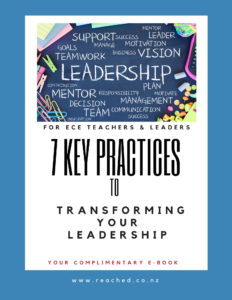Managing difficult interactions is part of teaching and challenging situations with parents and students are inevitable, but it doesn’t have to derail your day. With preparation and empathy, you can navigate these situations effectively.
How we respond to these moments can shape stronger partnerships, create mutual understanding, and ensure a productive and positive environment for everyone involved. With preparation, empathy, and clear communication, these interactions can become opportunities for growth rather than stress.
Quick Tips for Managing Difficult Interactions with Parents
- Stay Professional: Keep your tone calm and focus on finding solutions.
- Listen Actively: Show that you understand their concerns before presenting your perspective.
- Set Boundaries: Politely enforce limits on when and how parents can reach you.
Quick Tips for Managing Difficult Interactions with Students
- Seek to Understand: Behavior often reflects underlying challenges.
- Stay Consistent: Clear rules and predictable consequences build trust.
- Celebrate Small Improvements: Positive reinforcement encourages better behavior.
When you respond calmly and proactively, you defuse tension and foster better relationships.
Tips for Navigating Challenging Conversations with Parents
-
Stay Solution-Oriented and Professional
Approach each interaction with a calm, neutral tone and focus on the issue at hand. Avoid defensiveness and emphasize that your shared goal is the child’s success. For example: “I understand your concern, and together we can come up with strategies that support your child.”
-
Listen Actively with Empathy and Openness
Before responding, allow parents to express their concerns fully. Listening without interrupting shows respect and helps you understand their perspective. Phrases like, “It sounds like you’re worried about…” can help clarify and demonstrate that their concerns are heard.
-
Set Clear Communication Boundaries
To avoid burnout, establish clear guidelines for when and how parents can reach out (e.g., designated office hours or email response times). Politely reinforce these limits: “I value your input and am happy to discuss further during my office hours tomorrow.”
-
Involve Parents as Partners
Frame challenges as opportunities for collaboration. Invite their insights by asking, “What strategies have worked at home?” This fosters a sense of shared responsibility and teamwork.
Tips for Navigating Challenging Situations with Students
-
Seek To Understand
Challenging behaviors are often expressions of unmet needs or struggles. Approach these situations with curiosity rather than frustration. Ask yourself: Is this behavior a response to anxiety, a need for attention, or difficulty with the material? Then address the underlying issue.
-
Be Consistent with Expectations and Consequences
Students thrive with structure and predictability. Clearly communicate rules and ensure that consequences are fair and consistently applied. This fosters trust and helps students feel secure in the learning environment.
-
Focus on Positive Reinforcement
Celebrate progress, no matter how small. A simple acknowledgment like, “I noticed you worked hard on staying focused today—great job!” can boost a student’s confidence and motivate further improvement.
-
Model Calm Behavior
Your demeanor sets the tone. When faced with heightened emotions, keep your voice steady and your body language open. This demonstrates emotional regulation and teaches students to manage their own reactions.
General Strategies for Challenging Interactions
-
Separate the Issue from the Person
Whether dealing with parents or students, focus on the behavior or situation, not the individual. For example, instead of saying, “You’re being unreasonable,” reframe with, “Let’s explore how we can address this concern together.”
-
Use “I” Statements
Express your perspective without assigning blame. Phrases like, “I feel concerned when…” help de-escalate tension and promote constructive dialogue.
-
Practice Emotional Detachment
Difficult situations can feel personal, but maintaining objectivity is essential. Take a deep breath, remind yourself of the bigger picture, and respond with empathy rather than emotion.
Turning Challenges into Opportunities
By adopting a calm, proactive approach, teachers can transform challenging interactions into opportunities to build trust, mutual respect, and stronger partnerships with both parents and students. Maintaining professionalism and empathy fosters a more collaborative environment, making the teaching journey more rewarding for everyone involved.
© Gaynor Clarke, December 2025
Don’t wait to take care of yourself. Your wellbeing matters. Enrol in our course today:
Teacher Wellness First: A Wellbeing Guide for Early Childhood Leadership Success
Gaynor Clarke
B.Ed (Teaching), Cert Tertiary Teaching, PGDip Ed, MEd Leadership
Reach. Teach. Lead.
Reach Education Ltd
Teacher Leadership Mentoring and Life Coaching. Personal and Professional Development.
Gaynor is a teacher educator and mentor facilitating personal & professional leadership wellbeing outcomes for teachers.
If you are an early childhood teacher or leader looking to enhance your leadership skills, I would love to work with you. As a leadership mentor and coach, I specialize in helping early childhood educators develop their leadership potential and make a positive impact for the ākonga they serve. If you are interested in learning more about my leadership mentoring services, please visit my website or contact me directly to schedule a consultation. I would love to work with you!








Leave a Comment
You must be logged in to post a comment.